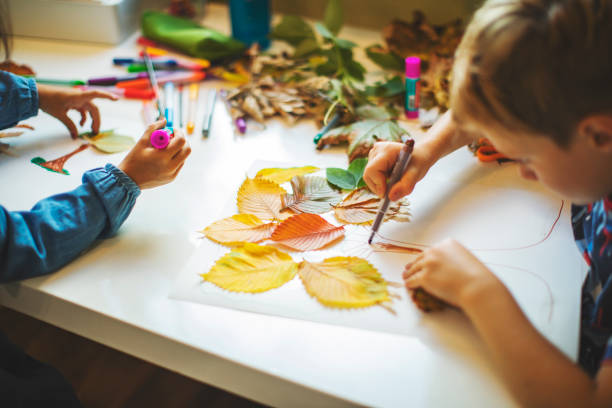Emma Rodriguez had a problem. Her travel blog about backpacking through remote villages in Peru was compelling—readers consistently praised her vivid descriptions and authentic storytelling—but she was losing potential visitors within the first few paragraphs. The culprit? A wall of unbroken text that felt overwhelming in our increasingly visual digital landscape.
Like many independent writers, Emma couldn’t afford a photographer for every assignment, and stock photos felt generic and disconnected from her personal experiences. Then she discovered AI-generated imagery, and everything changed. Within hours, she had created atmospheric visuals that perfectly captured the misty mountain mornings and vibrant market scenes she described in her writing. Her bounce rate dropped by 40%, and reader engagement skyrocketed.
Emma’s transformation isn’t unique. Across the digital publishing landscape, content creators are discovering that AI-generated visuals aren’t just a nice-to-have addition—they’re becoming essential tools for effective storytelling in the modern attention economy.
The Visual Imperative
We live in an era of information overload, where the average person encounters thousands of pieces of content daily. In this environment, the ability to quickly communicate value and capture attention has become paramount. Research consistently shows that articles with relevant images receive 94% more views than text-only content, but until recently, sourcing quality visuals remained a significant barrier for independent creators.
Traditional options were limited and often problematic. Stock photography, while accessible, frequently felt disconnected from the content’s specific narrative. Custom photography or illustration was expensive and time-intensive. Many writers simply went without visuals, accepting that their content would compete at a disadvantage in the visual-first social media ecosystem.
AI-generated imagery has shattered these constraints. Writers can now create bespoke visuals that align perfectly with their narrative voice and thematic content. More importantly, they can do so without breaking their budget or extending their publishing timeline. For creators eager to learn more about maximizing their content’s impact, AI visuals represent a game-changing opportunity to level the playing field with larger publications.
Beyond Illustration: AI as Narrative Partner
What makes AI-generated visuals particularly powerful for writers isn’t just their cost-effectiveness—it’s their ability to serve as true narrative partners. Unlike stock photos that merely illustrate concepts, AI-generated images can be crafted to support specific storytelling goals.
Consider Maria Santos, a freelance journalist who covers urban development and gentrification. When writing about the transformation of historic neighborhoods, she uses AI to create split-screen visuals showing the same street corner in different eras—one rendering captures the weathered charm of old architecture, while another shows sleek modern developments. These images don’t just accompany her words; they amplify her narrative about cultural change and urban evolution.
“The AI understands nuance in ways that stock photography never could,” Maria explains. “I can describe the exact mood I want—nostalgic but not romanticized, modern but not sterile—and get images that feel like they were created specifically for my story.”
The SEO Renaissance
The benefits extend beyond reader engagement to crucial technical advantages. Search engines increasingly prioritize content that provides comprehensive user experiences, and relevant visuals significantly boost SEO performance. Google’s algorithm updates have consistently emphasized the importance of visual content in determining search rankings, making images not just nice-to-have but essential for discoverability.
AI-generated visuals offer unique SEO advantages that traditional imagery often can’t match. Since these images are created specifically for each article, they’re inherently more relevant to the content than generic stock photos. Writers can also optimize AI generation prompts to include relevant keywords and concepts, creating images that support their content’s search performance from the ground up.
Jake Morrison, who runs a popular personal finance blog, saw his organic traffic increase by 65% after implementing AI-generated visuals. “The images perfectly matched my content themes, and Google started showing my articles in image search results for relevant financial topics,” he notes. “It wasn’t just about making the articles look better—it was about making them more discoverable.”
Storytelling Through Sequential Imagery
Perhaps the most innovative applications of AI in content creation involve sequential storytelling—using multiple generated images to create narrative arcs that complement written content. Food bloggers are creating step-by-step visual guides that show ingredients transforming into finished dishes. Business writers are illustrating complex processes through carefully crafted image sequences that make abstract concepts tangible.
Rachel Kim, who writes about sustainable living, has mastered this approach. Her recent article about urban composting featured a series of AI-generated images showing the complete lifecycle of kitchen scraps becoming garden soil. Each image was tailored to match specific moments in her written narrative, creating a cohesive visual story that made the composting process feel accessible and appealing to readers.
The Creative Process Revolution
AI image generation is also transforming how writers approach their creative process. Many are discovering that creating visuals for their articles helps them refine their own thinking and identify new narrative angles. The process of articulating visual concepts in AI prompts forces writers to clarify their ideas and consider different perspectives on their subject matter.
Tom Bradley, a technology journalist, describes how AI visuals have changed his writing process: “I used to write first, then think about images. Now I often generate images as I’m developing my ideas. Seeing visual representations of concepts helps me identify gaps in my logic or discover new angles I hadn’t considered.”
Challenges and Considerations
The integration of AI visuals into content creation isn’t without challenges. Maintaining authentic voice and avoiding generic AI aesthetics requires skill and thoughtful application. The most successful content creators are those who treat AI as a sophisticated tool rather than a magic solution, investing time in learning how to craft effective prompts and select images that truly enhance their storytelling.
There’s also the ongoing question of disclosure and authenticity. Leading creators are finding ways to be transparent about their use of AI while maintaining the immersive experience that makes visual storytelling effective.
The Future of Enhanced Content
As AI technology continues to evolve, we’re likely to see even more sophisticated applications in content creation. Interactive visuals, personalized imagery that adapts to reader preferences, and seamless integration between written and visual narrative elements are all on the horizon.
For writers and bloggers willing to embrace these tools thoughtfully, AI-generated visuals represent more than just a production shortcut—they’re opening new possibilities for storytelling that were previously accessible only to creators with significant resources. In the increasingly competitive landscape of digital content, the ability to pair compelling writing with perfectly matched visuals isn’t just an advantage—it’s becoming a necessity for anyone seriously looking to learn more about reaching and engaging their audience.
The future of content creation is visual, and AI is making that future accessible to every storyteller willing to explore its possibilities.



